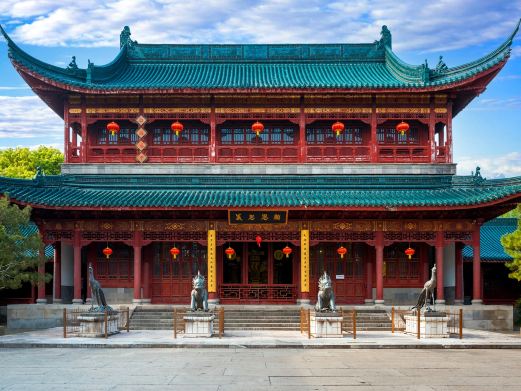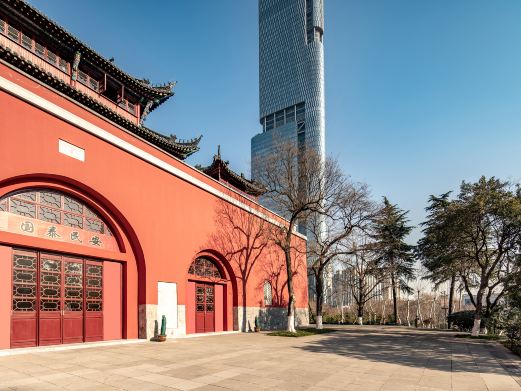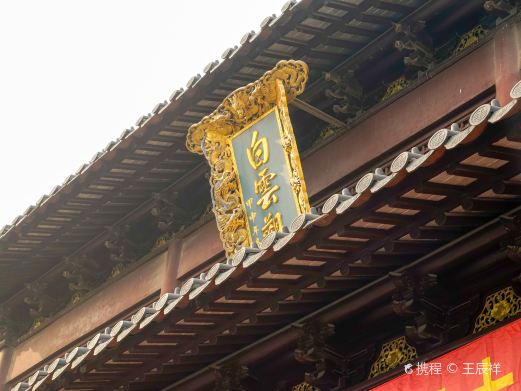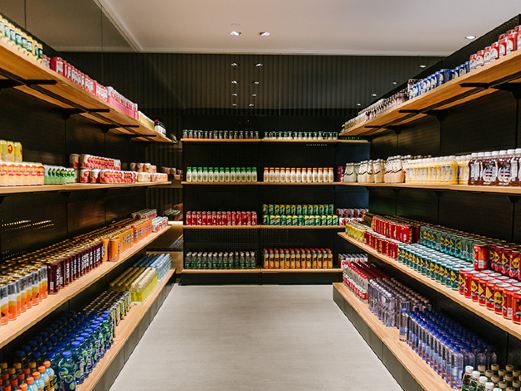Jingshan Temple, also known as Wanshou Zen Temple. It was first built during the Zhonghe years of the Tang Dynasty (881 – 884). King Qian Liu of Wuyue in the Five Dynasties inscribed the plaque as ‘Wuxing Zhengzhen Zen Temple’. During the Jiatai period of the Song Dynasty, it was changed to ‘Miaojue Temple’. During the reign of Emperor Ningzong of the Southern Song Dynasty (1195 – 1224), the highest grades of national Zen temples were designated as ‘Five Mountains and Ten Monasteries’, and Wanshou Zen Temple ranked second among the ten monasteries. At the end of the Yuan Dynasty, Wanshou Zen Temple was destroyed by war. Monk Zhengyin persuaded and raised funds for reconstruction. It was completed in the first year of Zhishun in the Yuan Dynasty (1330). After several years of hardships and the passage of time, the original appearance of Wanshou Zen Temple has become blurred. What is presented to us now is the overall architecture that has been continuously reconstructed since the 1980s. It is magnificent and solemn. Wanshou Zen Temple has once again become a famous temple in the south of the Yangtze River and a Buddhist holy land. Reconstructed in the 1980s. In the prosperous Tang Dynasty, Jingshan Temple had thousands of halls and pavilions and more than 3,000 monks, ranking first among the ‘Five Mountains and Ten Monasteries’ in the south of the Yangtze River. In the Southern Song Dynasty, Japanese monks brought the Zen tea ceremony of Jingshan Temple back to Japan along with Buddhist scriptures, which is the source of today’s Japanese tea ceremony. The Jingshan tea produced locally is very fragrant and very famous. Opening hours: Open all year round from 08:00 to 16:30.
Jingshan Temple
Jingshan Temple, also known as Wanshou Zen Temple. It was first built during the Zhonghe years of th[...]









